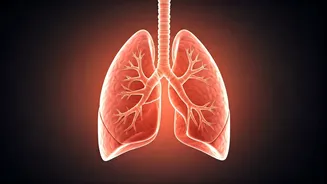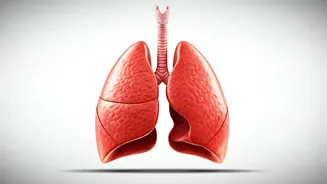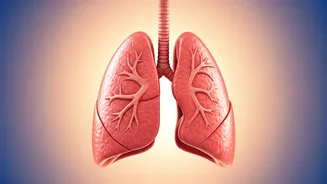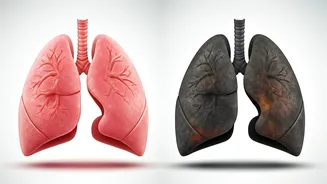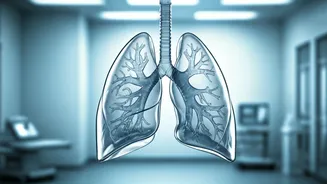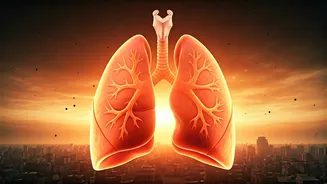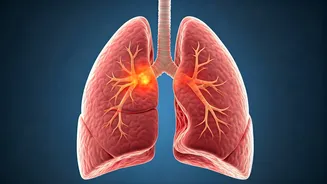Understanding Asthma
Asthma is a chronic respiratory condition, characterized by inflammation and narrowing of the airways, leading to breathing difficulties such as wheezing,
coughing, and chest tightness. It impacts individuals of all ages, including children, adults, and the elderly. Asthma triggers can be diverse, encompassing allergens like pollen, dust mites, pet dander, or irritants in the air, such as smoke or strong odors. Emotional stress or physical exertion may also be triggers. Managing asthma involves identifying and avoiding triggers, using prescribed medications, and, importantly, employing breathing exercises. These exercises can help strengthen respiratory muscles and enhance lung capacity, potentially reducing the frequency and severity of asthma symptoms and improving overall quality of life.
Diaphragmatic Breathing
Also known as abdominal breathing, this technique focuses on deep, slow breaths that utilize the diaphragm. This large muscle located at the base of the lungs plays a crucial role in respiration. To practice, sit or lie comfortably, placing one hand on your chest and the other on your abdomen. Inhale slowly through your nose, allowing your abdomen to rise as the diaphragm contracts and descends, enabling the lungs to expand fully. Your chest should move very little. Exhale slowly through pursed lips, allowing your abdomen to fall as the diaphragm relaxes. Diaphragmatic breathing helps strengthen the diaphragm, promotes relaxation, and enhances oxygen exchange, leading to reduced breathlessness and improved symptom control. It is particularly useful during asthma flare-ups to calm the nervous system and ease breathing.
Pursed-Lip Breathing
This technique helps slow down your breathing rate and keeps airways open longer, reducing trapped air and easing the work of breathing. To perform it, breathe in slowly through your nose, keeping your mouth closed. Then, purse your lips as if you're about to whistle and breathe out slowly through your pursed lips, taking twice as long to exhale as you did to inhale. This method creates back pressure in your airways, preventing them from collapsing and allowing for more efficient oxygen exchange. Pursed-lip breathing can be employed during periods of breathlessness, such as during exercise or even during an asthma attack. It helps alleviate shortness of breath and reduces anxiety, improving the effectiveness of other treatments.
Buteyko Breathing Method
The Buteyko method is a breathing technique aimed at reducing hyperventilation, a common problem for people with asthma. It is built on the premise that over-breathing reduces carbon dioxide levels in the blood, which can constrict the airways. The method involves a series of controlled breathing exercises designed to normalize breathing patterns. This involves practicing shallow breathing to gently increase carbon dioxide levels. The exercises include 'reduced breathing' and 'breath holds'. The technique should be learned under the guidance of a trained practitioner. Consistent practice of the Buteyko method can help reduce the frequency and severity of asthma symptoms by retraining the breathing pattern and reducing airway inflammation, as well as enhancing overall respiratory health.
Yoga and Pranayama
Yoga and Pranayama, the yogic practice of breath control, offer powerful techniques for managing asthma. Specific poses and breathing exercises can help improve lung capacity, reduce stress, and promote relaxation. Pranayama techniques, such as alternate nostril breathing (Nadi Shodhana), involve breathing through one nostril while blocking the other, balancing the nervous system and easing breathing difficulties. Specific yoga asanas, like the Cobra Pose (Bhujangasana) and the Bridge Pose (Setu Bandhasana), stretch the chest muscles and open up the lungs, thus enhancing airflow. Regular practice, coupled with appropriate yoga postures, can assist in reducing asthma symptoms, improving lung function, and enhancing overall respiratory health. It is always wise to consult an experienced yoga instructor before starting.
Tips for Successful Practice
To effectively integrate breathing exercises into your asthma management plan, consider these tips. Start slowly, gradually increasing the duration and intensity of the exercises as your comfort grows. Practice the exercises regularly, ideally several times a day. Find a quiet, comfortable environment, free from distractions, to maximize focus. Be patient, as it may take time to see noticeable improvements in your breathing and symptom management. Consult your doctor or a respiratory therapist before starting any new breathing exercises, particularly if you have other health conditions. Monitor your symptoms and adjust your practice as needed. Combining breathing exercises with your prescribed medication and lifestyle adjustments, such as avoiding triggers and following a healthy diet, can significantly improve your asthma control and quality of life.
